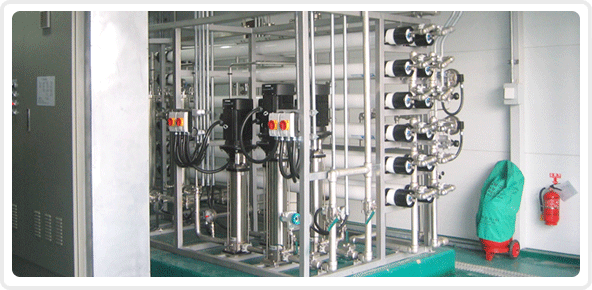 |
 |
 |
Abstract
|
| |
The
feed water pressure at this point is about 20
to 30 pounds per square inch. The R/O process
requires pressure to force the water through a
semi-permeable membrane, i.e. overcome the osmotic
pressure. To provide this added pressure requirement,
high pressure pumps are located between the micron
filters and the R/O units. The pumps are a "manifolded"
design. This means that all five of the pumps
are available to pressurize the manifold pipe
which supplies the feedwater to the R/O units.
The flow to the R/O units is regulated with a
flow control valve based on the amount of product
water to be produced by the unit. Feed pressures
to the units are expected to rise as the membranes
age. Initial feed pressures were 100 psi with
a five year projected pressure of 120 psi. This
pressure is also affected by the degree of salinity
of the feedwater. As the raw water quality decreases,
or a brackish water supply is further developed,
more pressure will be needed to produce the same
quantity of water.
The R/O membrane is a basic separation process.
When the feedwater enters the membrane it is separated
in "Product" and "Concentrate"
water. The concentrate is 17% of the feed flow
into the unit and is highly concentrated with
the ions from the feedwater. The concentrate is
then disposed of through a separate pipeline to
the City's wastewater treatment plant where it
is treated and becomes part of the effluent utilized
by the Reclaimed Water System. The R/O membranes
pass 83% of the feedwater through the membrane
as it removes calcium and magnesium ions in the
water. This water is called the "Product"
water. It is then piped to the next step of treatment.
|
|
|
 |
R/O flow sheet
|
| |
|
 |
R/O reaction mechanism
|
| |
|
|